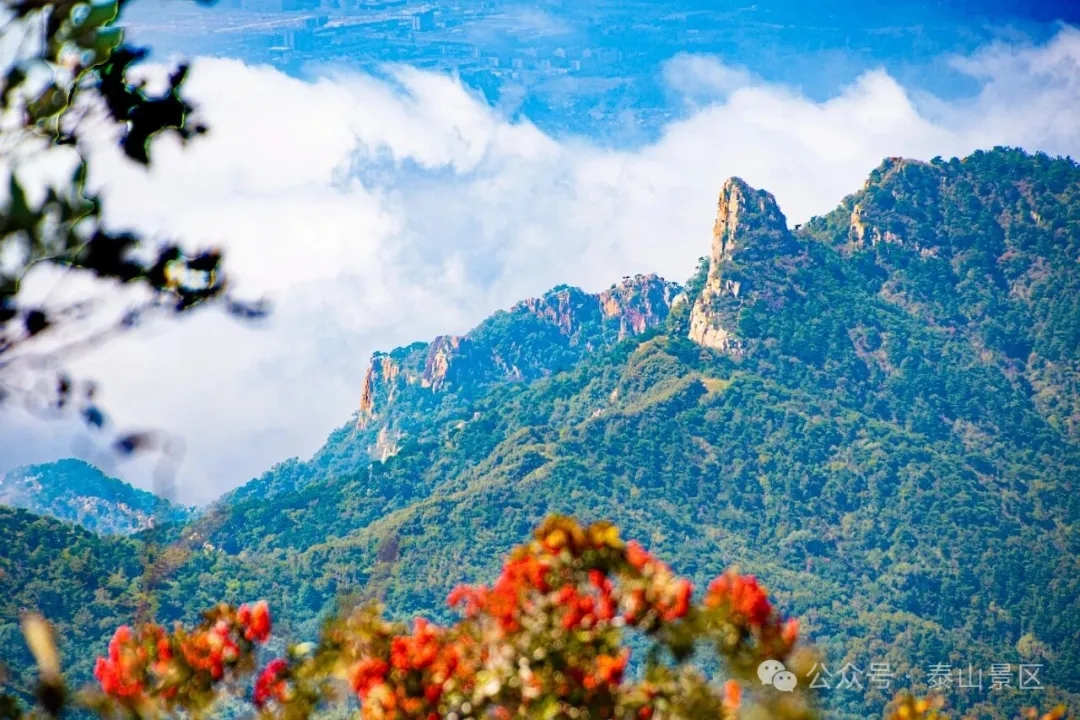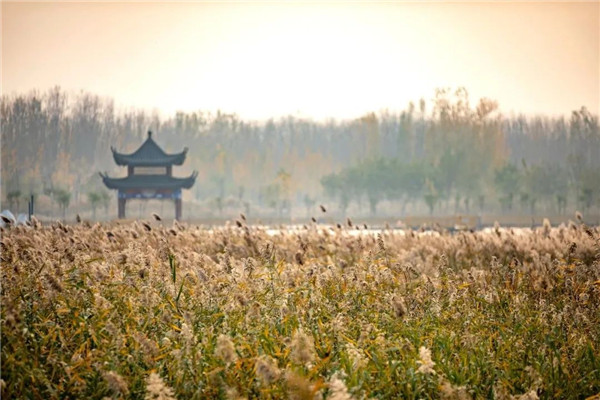Mount Taishan—Spirit of China
Garden of Chinese Art
The beauty of Mount Taishan is out of the creation of the Mother Nature. The main peak of the mountain dwarfs all other smaller mountains around it, and allows visitors on top to take in everything at a glance. Mount Taishan provides magnificent view of a myriad scenes and natural landscape.
It boosts all kinds of spectacular sceneries, which make visitors feel they are in heaven. From a distance, one can feel the magnificence of Mount Taishan. Looking closely, one can see its fathomless ness. From south, one can see a precipitous mountain, and from east, one can see a majestic mountain. They are different faces of Mount Taishan. It has altogether 100 best wonders on Mount Taishan. Below are four major ones:
Watching the Sunrise
Ever since ancient times, watching sunrise on the summit of Mount Taishan has been a great attraction for visitors. Before dawn, if standing on top of the mountain and looking far east, one can find the sky change colors, from grey to pale yellow, and then to orange. Then all reddish cloud along the horizon gives way to a newborn sun, which first hesitates to rise. Then in a sudden, the sunshine makes all peaks red.
Golden Ribbon of the Yellow River
At the peak of Mount Taishan, if looking north, one can see the Yellow River at the end of the horizon. It glitters like a golden ribbon from southwest to northeast. The river was described as the milk way in an ancient poem written by famous poet Yuan Mei.
Sunset Glow
In clear air, Mount Taishan is enveloped in a rosy color at sunset. The clouds become multi-hued, offering a majestic view. As the sun sinks down into the clouds, the western sky is instantly aglow with flame, and the clouds, peaks and sky appear to be alight.
Sea of Cloud
As early as the Warring State Period, Gongyang Gao praised the legend of Mount Taishan. The cloud in the mountain can be as white as snow, and as dark as to cover up the sun. It can satisfy all imagination of visitors. There are 18 caves with names, 64 springs and waterfalls, 72 huge stones, 100 scenic hills and 156 peaks on Mount Taishan.
Meanwhile, there are 58 groups of ancient architects, 100 cultural relics, 1,239 tablets and 1,277 stone-carved inscriptions. Besides, the mountain boosts more than 1,100 species of plants, approximately 20,000 ancient trees. All these add together to the natural and historical glory of the mountain. If climbing the mountain along the steps, it demands great strength. Ordinary people prefer this way to enjoy beautiful sceneries along the way. They include towering cypress, ancient stone tablets, pavilions and stone sculptures.
After most of the steps, one can finally reach the eighteen turns almost at the end, which are steep and difficult to climb. For Chinese people, each blade of grass and every tree on this sacred mountain are imbued with mystical color. In the past, they were superstitious about the god of the mountain, whom they believed has the power to rule the heaven and the earth, and govern life and death. The merciful and benevolent goddesses of the mountain was said to answer to every prayer. The rocks were supposed to dispel evil, the grass and trees to cure illness.
Men and women believers, pious and devoted, have scrambled their way up the mountain paths, stopping at every altar, worshipping and lighting incense, and praying to the goddess to bless and protect them. This custom can still be seen today. Now however, for most Chinese climbing Mount Taishan is not for worship, but to see the sights as well as test their stamina.
Besides, it is the best place to have an understanding of the Chinese culture. If entering the mountain by bus, one can have a different view, but as beautiful as the other way. Forests, blossoms and brooks are everywhere. If standing on the Heavenly Candle Peak, one finds unique sceneries that are strange, deep and serene.
If stepping on the East Imperial Path, one can see all strange-shaped pine trees and heavenly grass. All these different paths leading to the top of Mount Taishan end at the peak. These unique geological features of Mount Taishan yield to a grand and majestic look. "When the earth ends, you can see sky, when standing on top of a mountain, you are the peak." Standing on the top and watching the sunrise and the sunset, one feels the opening-up of his or her mind. One can talk with the heaven and the earth, the moon and the sun.
At that time, human and nature are the one. Many scholars and literati come to the mountain to have this feeling. They are deeply moved by Mount Taishan, greatly inspired by the broadness of the mountain, and then praise the mountain in different ways. In an ancient time, Confucius felt "the world is small looking from the top of Mount Taishan." Since then, well-known persons such as Cao Zhi, Li Bai, Du Fu, Su Dongpo, Yuan Haowen, Dang Huaiying and Tang Zhongmian all climbed Mount Taishan. In modern times, many famous articles have been written to describe the sceneries on the mountain.
Almost all famous literature works, including A Dream on the Red Mansion, A Journey To the West, Romance of Three Kingdoms, Plum in the Gold Vase, Strange Tales from A Lonely Studio and Journey of Lao Can, have excellent descriptions about Mount Taishan. This unique cultural phenomenon can only happen to Mount Taishan, never any other mountains in China, or around the world.



 Embark on cultural trip in Shandong
Embark on cultural trip in Shandong Global civilizations shine at Nishan in Shandong
Global civilizations shine at Nishan in Shandong Explore Taishan Mountain's autumn splendor
Explore Taishan Mountain's autumn splendor

